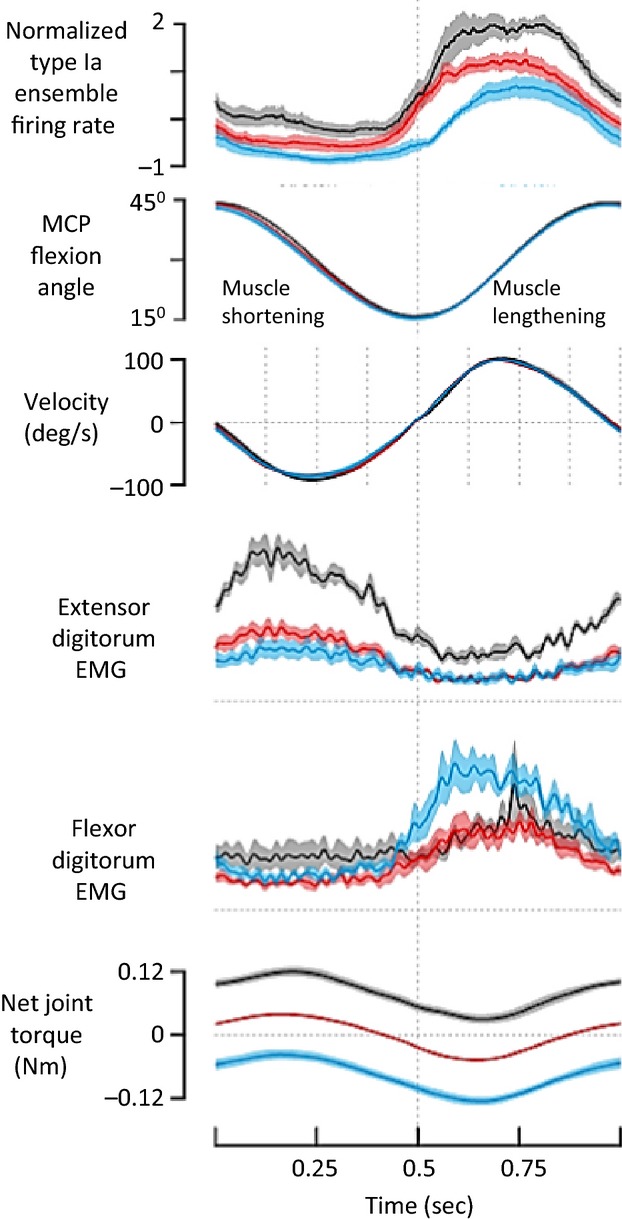Fig 3.

Mean normalized firing rates of nine extensor digitorum Ia afferents in seven subjects performing voluntary finger movement without loading (red) or in the presence of steady imposed flexor torque (black) or extensor torque (blue). Imposed flexor torque required a compensatory increase in extensor EMG activity, particularly during muscle shortening. This was correlated with an increase in the offset and stretch-sensitivity of extensor Ia firing compared with unloaded movements, consistent with elevated extensor fusimotor drive. Movements in the presence of imposed extensor torque (blue) required compensatory increases in flexor EMG. The associated reduction in extensor Ia firing in response to muscle stretch suggested reduced extensor fusimotor drive. Ia firing was well correlated with muscle velocity in all cases. Shaded areas represent +1 SEM. Modified with permission from Dimitriou (2014).
